HOME|Ideas and resoueces for planetary science experiments|Observing a Solar Eclipse
宇宙の実験教室
Ideas and resoueces for planetary science experiments
カテゴリ
Category
- 実験教室Idea and Resources for Space science experiments
- 対象項目別Category: Contents
- 学年単元別Category: Study Age
-
- 実践授業Activity Reports
タグ
Tag
 日食を観察しよう
日食を観察しよう
ねらい
日食を観察してみましょう。
日食は、太陽、月、地球がこの順番で一直線上にならび、地球上から見たときに太陽が月にかくされてしまう現象です。ここでは、観察法を簡単に紹介し、授業で活用できるプリント教材を提供します。
日食とはなんでしょう?
日食の時には太陽が欠けて見えたり、時には太陽が全部なくなってしまったように見えたりすることもあります。どうしてそんなことがおきるのでしょう?
自分の考えを図にしてみましょう。

日食とは...
太陽、月、地球がこの順番で一直線上にならび、地球上から見たときに太陽が月にかくされてしまう現象です。

太陽の大きさは、月の約400倍です。とても大きいですね。でも、地球と太陽との距離は、地球と月との距離の約400倍です。だから、地球から見ると、月の大きさと太陽の大きさはほぼ同じに見えてしまうのです。
日食にはいろいろな種類があります。
皆既日食...太陽と月が完全に重なり、太陽の本体がかくされてまわりを取り囲んでいるコロナというガスのかたまりが姿を見せます。
金冠日食...太陽と月が完全に重なり、しかも月の方が太陽よりも小さく見えるときは 太陽の縁だけがはみ出して見えます。
部分日食...太陽のはしをかすめるように月が動いていくと、太陽の一部が欠けて見えます。
観察方法
用意するもの
太陽観察用遮光板
中村理科太陽観察用遮光板 遮光度番号 13 |
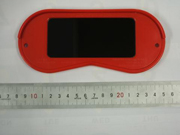 |
予想してみましょう
いったいどれだけの時間欠けてみえるのでしょう?
(30秒くらい、 5分くらい、 15分くらい、 2時間くらい、 1日中 )
どのように欠けて見えるのか、図であらわしてみましょう。
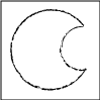
観察しよう
遮光板を通して太陽を直接観察します。
観察した太陽の形を5分おきにスケッチしましょう。
眼を痛めるので、決して直接太陽を見ないこと!!
観察結果・考えてみよう
観察した日食のスケッチ
2004年10月14日 仙台市にて
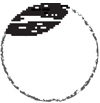 |
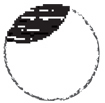 |
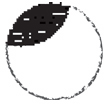 |
| (11:30) | (11:35) | (11:40) |
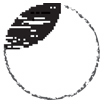 |
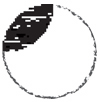 |
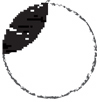 |
| (11:45) | (11:50) | (11:55) |
考えてみよう
最大どのくらい太陽が欠けたでしょうか。
日食の始まりから終わりまで、どの位の時間が経過したでしょう。
どうして日食がおこるのでしょう。
今後日食が観察できる日
2010年までの日食の予定
国立天文台のホームページから引用させて頂きました。
(日付は、食が最大になるときを日本時間で表しています。カッコ内は、日食が見える地域を大まかに示しています。「皆既日食」「金環食」では皆既・金環食が見える地域を示し、部分日食だけが見える範囲は含めていません。「部分日食」では日食が見える地域全体を示しています。)
2005-10-03 金環食(欧州、アフリカ)
2006-03-29 皆既日食(アフリカ、西アジア)
2006-09-22 金環食(南米、大西洋)
2007-03-19 部分日食(東アジア、ロシア、日本の一部)
2007-09-11 部分日食(南米、南極)
2008-02-07 金環食(南極)
2008-08-01 皆既日食(北極圏、ロシア、中国)
2009-01-26 金環食(インド洋、インドネシア)
2009-07-22 皆既日食(インド、中国、日本(トカラ列島)、太平洋、日本全国で部分日食)
2010-01-15 金環食(アフリカ、インド洋、中国、東南アジア、日本では日没帯食)
2010-07-12 皆既日食(南太平洋)
ワークシート集
日食観察で八木山小学校で実際に利用したワークシートです。
| 内 容 | HTML | |
| 観察する前に予想を立てます。 | ワークシート1 | |
| 観察結果を記入します。 | ワークシート2 |
 Observing a Solar Eclipse
Observing a Solar Eclipse
Introduction
We attempt to observe a solar eclipse
A solar eclipse occurs when the Sun, Moon and Earth line up, in this order, so that as observed from the Earth, the Moon passes in front of the Sun. Here we introduce a simple observing method which can be used as a classroom teaching aid.
What is a solar eclipse?
During a solar eclipse, sometimes the Sun is completely obscured, while at other times the Sun is partially covered but still visible. What is happening during the phenomenon?
Try to explain this by drawing a diagram.

Solar Eclipses...
When the Sun, Month and Earth are in a straight line, as viewed from the Earth, the Moon hides the Sun.

The Sun is approximately 400 times larger than the Moon. The Sun is a vast body. But the Sun is about 400 times further away from the Earth than the Moon is. Consequently, as viewed from the Earth's surface, the Sun and Moon appear the same size.
There are three different kinds of solar eclipse:
-
The Total Solar Eclipse: The Sun and Moon are lined up perfectly, the surface of the Sun is hidden and the gaseous solar corona is visible.
- The Annular ("Ring") Solar Eclipse: The Sun and Moon are lined up perfectly, but the Moon appears slightly smaller than the Sun, so the edge of the Sun's surface protrudes around the edge of the Moon's disk.
- The Partial Solar Eclipse... The Sun and Moon are not perfectly aligned, and part of the Moon's disk moves across the face of the Sun, so that the Sun is partially obscured.
Observing Method
Things to Prepare
Solar observing visor
Sun shade for Nakamura science solar observation SF-105N Filter No. 13 |
 |
What to expect
- How much of the Sun needs to be obscured before an eclipse becomes visible?
(30 seconds, 5 minutes, 15 minutes, 2 hours, 1 day)
- What will be the appearance of the eclipsed sun? Draw your prediction.

Your Observations
Use the Sun visor when observing the Sun directly.
Sketch the shape of the Sun you observe every five minutes.
You can hurt your eyes if you look at the Sun directly without protection!
Discussion of Observations
Sketching your solar eclipse observations
2004 Oct 14 in Sendai
 |
 |
 |
| (11:30) | (11:35) | (11:40) |
 |
 |
 |
| (11:45) | (11:50) | (11:55) |
Discussion
- How much of the Sun was hidden at maximum eclipse?
- How long did the eclipse last in total?
- Now you will understand how eclipses occur.
Future Eclipses
Future Solar Eclipses to 2010
Data from the Japanese National Observatory
(Below are shown the times of maximum eclipse in Japanese time. The approximate area where the eclipse is visible is given in brackets. For total and annular eclipses, only the region where a total or annular eclipse is visible is shown. For partial eclipses, the entire area where an eclipse is visible is shown.)
-
2005-10-03 Annular Solar Eclipse (Europe and Africa)
- 2006-03-29 Total Solar Eclipse (Africa and western Asia)
- 2006-09-22 Annular Solar Eclipse (South America and Atlantic Ocean)
- 2007-03-19 Partial Solar Eclipse (East Asia, Russia and part of Japan)
- 2007-09-11 Partial Solar Eclipse (South America and Antarctica)
- 2008-02-07 Annular Solar Eclipse (Antarctica)
- 2008-08-01 Total Solar Eclipse (Arctic Circle, Russia and China)
- 2009-01-26 Annular Solar Eclipse (Indian Ocean and Indonesia)
- 2009-07-22 Total Solar Eclipse (India, China, Japan (Ryukyu Archipelago) and Pacific Ocean, with partial eclipse visible across Japan)
- 2010-01-15 Annular Solar Eclipse (Africa, Indian Ocean, China, Southeast Asia and Japan at sunset)
- 2010-07-12 Total Solar Eclipse (South Pacific Ocean)
Worksheet Collection
These worksheets were used at Yagiyama Primary School for solar eclipse observations.
| Worksheet | HTML | |
| Pre-Eclipse Expectations | Worksheet 1 | |
| Report of Observations | Worksheet 2 | 255 |











